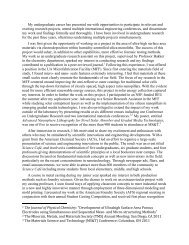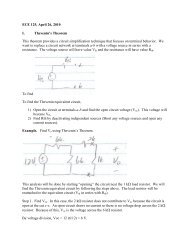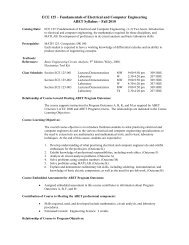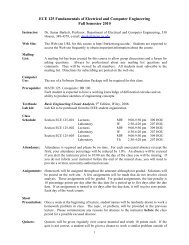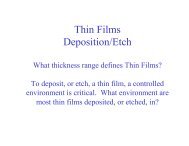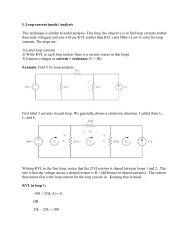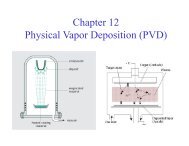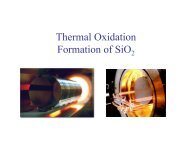Photoresist
Photoresist
Photoresist
You also want an ePaper? Increase the reach of your titles
YUMPU automatically turns print PDFs into web optimized ePapers that Google loves.
Figure 8.9 Typical process flow<br />
in a photolithography step.<br />
1) Dehydration bake at 150-200 ºC in vacuum or<br />
nitrogen atmosphere for removing surface moisture<br />
on wafer to improve PR adhesion<br />
2) Wafer is primed with Hexamethyldisilazane<br />
(HMDS) - a commonly used adhesion promoter<br />
3) PR is applied by spin coating: small amount of<br />
resist dispensed on wafer and the wafer chuck<br />
(platform) spins rapidly (2000-6000 rpm)<br />
1<br />
T R<br />
∝<br />
ω<br />
4) Softbake (prebake) at ∼ 90-100 ºC will help to<br />
evaporate solvents in the resist<br />
5) Exposure to optical source<br />
6) PEB may be done to stabilize resist<br />
7) Spray coating, or immersion, of wafer in<br />
developer promotes PR removal in certain areas<br />
8) Hardbake increases adhesion of PR to underlying<br />
film to stabilize resist against the etch step or ion<br />
implantation steps



